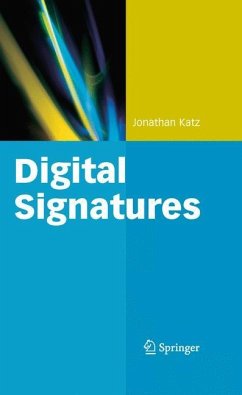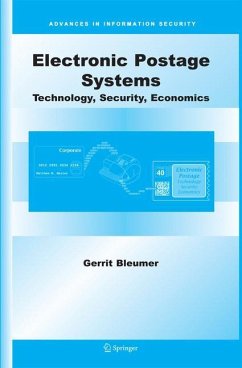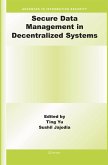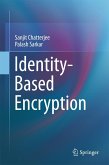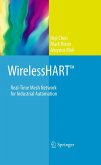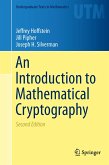As a beginning graduate student, I recall being frustrated by a general lack of acces sible sources from which I could learn about (theoretical) cryptography. I remember wondering: why aren't there more books presenting the basics of cryptography at an introductory level? Jumping ahead almost a decade later, as a faculty member my graduate students now ask me: what is the best resource for learning about (various topics in) cryptography? This monograph is intended to serve as an answer to these 1 questions - at least with regard to digital signature schemes. Given the above motivation, this book has been written with a beginninggraduate student in mind: a student who is potentially interested in doing research in the ?eld of cryptography, and who has taken an introductory course on the subject, but is not sure where to turn next. Though intended primarily for that audience, I hope that advanced graduate students and researchers will ?nd the book useful as well. In addition to covering various constructions of digital signature schemes in a uni?ed framework, this text also serves as a compendium of various "folklore" results that are, perhaps, not as well known as they should be. This book could also serve as a textbook for a graduate seminar on advanced cryptography; in such a class, I expect the entire book could be covered at a leisurely pace in one semester with perhaps some time left over for excursions into related topics.
From the reviews:
"This book is a basic and fundamental reference for studying and understanding digital signature schemes and all aspects related to their security. This very interesting book has been written mainly for graduate students, but it should also prove useful for researchers and lecturers. ... Each chapter ends with a valuable section suggesting further reading on topics dealt with in that chapter." (Luis Hernández Encinas, Mathematical Reviews, Issue 2011 i)
"This book contains a sound treatment of digital signature schemes. The intended audience is in first place '...a beginning graduate student who is potentially interested in doing research in the field of cryptography.' The book does not only provide a survey of most of the current signature schemes but demonstrate clear statements about the achievable security in the sense of provable security. This makes it valuable also for the advanced researcher." (Ulrich Tipp, Zentralblatt MATH, Vol. 1202, 2011)
"Katz gives a base-level treatise on the subject of digital signatures by providing readers with a comprehensive understanding of the security guarantees, with descriptions and details of well-known secure signature schemes in the cryptographic literature. ... The target audience is graduate students and research scholars of advanced cryptography. ... A very useful and noteworthy feature of the book is that, at the end of each chapter, the author gives commentary on the relevant and referred literature survey he did for that chapter." (C. S. Arora, ACM Computing Reviews, August, 2011)
"This book is a basic and fundamental reference for studying and understanding digital signature schemes and all aspects related to their security. This very interesting book has been written mainly for graduate students, but it should also prove useful for researchers and lecturers. ... Each chapter ends with a valuable section suggesting further reading on topics dealt with in that chapter." (Luis Hernández Encinas, Mathematical Reviews, Issue 2011 i)
"This book contains a sound treatment of digital signature schemes. The intended audience is in first place '...a beginning graduate student who is potentially interested in doing research in the field of cryptography.' The book does not only provide a survey of most of the current signature schemes but demonstrate clear statements about the achievable security in the sense of provable security. This makes it valuable also for the advanced researcher." (Ulrich Tipp, Zentralblatt MATH, Vol. 1202, 2011)
"Katz gives a base-level treatise on the subject of digital signatures by providing readers with a comprehensive understanding of the security guarantees, with descriptions and details of well-known secure signature schemes in the cryptographic literature. ... The target audience is graduate students and research scholars of advanced cryptography. ... A very useful and noteworthy feature of the book is that, at the end of each chapter, the author gives commentary on the relevant and referred literature survey he did for that chapter." (C. S. Arora, ACM Computing Reviews, August, 2011)
From the book reviews:
"The book talks about the constructions of digital signatures and drives it home. Each chapter is rigorous and complete in its own right, yet there is a level of simplicity and elegance maintained throughout the book that makes it very readable. ... The book is essentially a 'Greatest Hits Collection' of Digital Signatures, and I would highly recommend it to graduate students and early stage researchers interested in cryptography and Digital Signatures, who have taken a first course in cryptography." (Subhayan Roy Moulick, SIGACT News, Vol. 46 (1), 2015)
"This book is a basic and fundamental reference for studying and understanding digital signature schemes and all aspects related to their security. This very interesting book has been written mainly for graduate students, but it should also prove useful for researchers and lecturers. ... Each chapter ends with a valuable section suggesting further reading on topics dealt with in that chapter." (Luis Hernández Encinas, Mathematical Reviews, Issue 2011 i)
"This book contains a sound treatment of digital signature schemes. The intended audience is in first place '...a beginning graduate student who is potentially interested in doing research in the field of cryptography.' The book does not only provide a survey of most of the current signature schemes but demonstrate clear statements about the achievable security in the sense of provable security. This makes it valuable also for the advanced researcher." (Ulrich Tipp, Zentralblatt MATH, Vol. 1202, 2011)
"Katz gives a base-level treatise on the subject of digital signatures by providing readers with a comprehensive understanding of the security guarantees, with descriptions and details of well-known secure signature schemes in the cryptographic literature. ... The target audience is graduate students and research scholars of advanced cryptography. ... A very usefuland noteworthy feature of the book is that, at the end of each chapter, the author gives commentary on the relevant and referred literature survey he did for that chapter." (C. S. Arora, ACM Computing Reviews, August, 2011)
"The book talks about the constructions of digital signatures and drives it home. Each chapter is rigorous and complete in its own right, yet there is a level of simplicity and elegance maintained throughout the book that makes it very readable. ... The book is essentially a 'Greatest Hits Collection' of Digital Signatures, and I would highly recommend it to graduate students and early stage researchers interested in cryptography and Digital Signatures, who have taken a first course in cryptography." (Subhayan Roy Moulick, SIGACT News, Vol. 46 (1), 2015)
"This book is a basic and fundamental reference for studying and understanding digital signature schemes and all aspects related to their security. This very interesting book has been written mainly for graduate students, but it should also prove useful for researchers and lecturers. ... Each chapter ends with a valuable section suggesting further reading on topics dealt with in that chapter." (Luis Hernández Encinas, Mathematical Reviews, Issue 2011 i)
"This book contains a sound treatment of digital signature schemes. The intended audience is in first place '...a beginning graduate student who is potentially interested in doing research in the field of cryptography.' The book does not only provide a survey of most of the current signature schemes but demonstrate clear statements about the achievable security in the sense of provable security. This makes it valuable also for the advanced researcher." (Ulrich Tipp, Zentralblatt MATH, Vol. 1202, 2011)
"Katz gives a base-level treatise on the subject of digital signatures by providing readers with a comprehensive understanding of the security guarantees, with descriptions and details of well-known secure signature schemes in the cryptographic literature. ... The target audience is graduate students and research scholars of advanced cryptography. ... A very usefuland noteworthy feature of the book is that, at the end of each chapter, the author gives commentary on the relevant and referred literature survey he did for that chapter." (C. S. Arora, ACM Computing Reviews, August, 2011)

